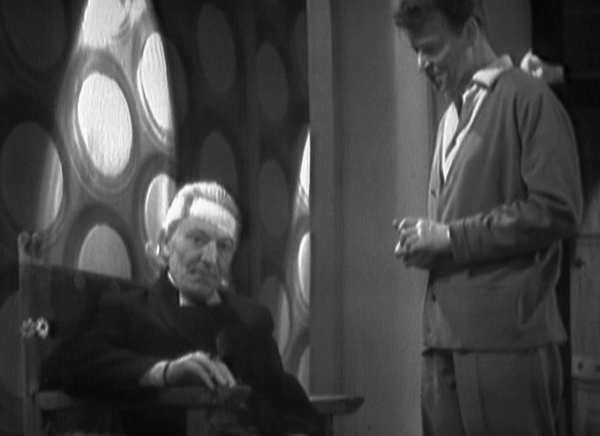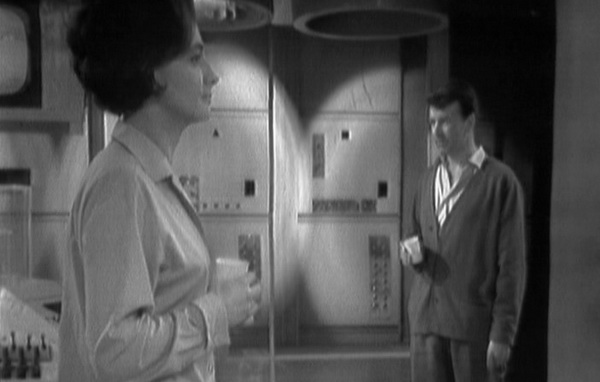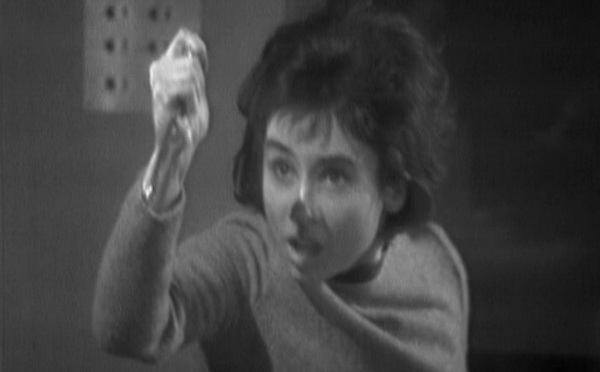|
| ||
|
PRODUCTION CODE C
WRITTEN BY DAVID WHITAKER
DIRECTED BY RICHARD MARTIN & FRANK COX
RATINGS 10.2 MILLION
WORKING TITLE INSIDE THE SPACESHIP
RECOMMENDED PURCHASE 'THE BEGINNING' DVD BOX SET (BBCDVD1882) RELEASED IN JANUARY 2006.
BLURB Something has caused the TARDIS console to explode in mid-flight, rendering the crew unconscious.
As they EACH SLOWLY recover, they find themselves suffering from loss of memory and headaches.
The TARDIS behaves oddly, as the doors open and close of their own accord.
Has the ship been possessed in some way, or is Something morE dangerous happening? |
| |
|
|
|
|
|
The Edge of Destruction 8TH FEBRUARY 1964 - 15TH FEBRUARY 1964 (2 EPISODES)
1. THE EDGE OF DESTRUCTION
2. THE BRINK OF DISASTER
The Edge of Destruction is the story which finally unifies our unlikely heroes into a crew, even into friends. An early example of a low-budget ‘bottle-show’ these two episodes were set entirely within the confines of the TARDIS to save money - it seems that the production team had overspent on the TARDIS sets, having tried in vain to spread the cost over fifty-two episodes instead of the guaranteed thirteen. As such the series’ first two-parter had to focus on character, and I dare say that it’s all the better for it.
However, I don’t mean to suggest that this story is without incident. Surreal at times, “The Edge of Destruction” and “The Brink of Disaster” feature some truly disturbing scenes – the strangulation cliffhanger; Susan looking psychotically dangerous with those scissors; and even the Doctor, overcome with paranoia, threatening to put Ian and Barbara off the ship.
Where this story falls down though is in its resolution – all our heroes’ woes were caused by a faulty spring in the TARDIS’s “fast return switch” (which was comical in itself as William Hartnell had to have it written on the console in felt tip pen so that he could remember where it was called) Epic speeches from Hartnell, disturbing psychological trauma, the emotional bonding of a crew finally coming together in fellowship - and it’s all due to a damned faulty spring.
Above: Original series producer Verity Lambert discusses its beginning
Over the Edge is a shorter feature which focuses exclusively on The Edge of Destruction. It’s an insightful programme, very much in line with the standard of ‘making of’ featurettes included on most DVD releases. Inside the Spaceship, which incidentally takes its name from the production title for this story, is a short feature about the TARDIS itself, aptly placed on this volume. Along with the production subtitles (which are more welcome than ever on this disc as the episodes have no commentary track), the Restoration Team have thrown in some interesting DVD-ROM content, a photo gallery, an Arabic soundtrack and what I must imagine is a deleted sequence from the 30 Years in the TARDIS documentary – Masters of Sound. Unfortunately, this short feature is for the most part a re-hash of material included in the main Origins documentary (or perhaps vice-versa).
Surprisingly, the special feature that I enjoyed most of all on this release was the inclusion of a half-hour reconstruction of Marco Polo. Although I’ve previously been able to enjoy this lost story by virtue of the BBC Radio Collection’s soundtrack release, that exclusively aural experience does not compare to Mark Ayres’ stunning reconstruction. The combination of telesnaps and audio gives us what will most probably prove to be the closest that we’ll ever get to experiencing this serial as it was originally intended. And whilst a full-length recon would certainly be worthy of its own release, this condensed version really captures the spirit of the story; the feel of the travellers’ epic journey. Ayres even retains Marco Polo’s enchanting diary entries to help narrate the story, which are especially useful here considering how much of the story he has been forced to exclude.
And so for a DVD that may not have been very high up on most fans shopping
lists were it to have been released alone, The Edge of Destruction
is actually a fantastic release that The Beginning would not be complete
without.
|
||
|
Copyright © E.G. Wolverson 2006
E.G. Wolverson has asserted his right under the Copyright, Design and Patents Act 1988, to be identified as the author of this work. |
||
|
What a shame that this should be David Whitaker’s first credited script for the series. Considering that he would go on to write some the best scripts for both Hartnell and Troughton (The Crusade, The Power and Evil of the Daleks), this is an underwhelming first effort. Let’s not forget his heavy involvement in rewriting many of Season 1’s scripts though, especially his major input into The Daleks. The idea behind The Edge of Destruction - an intense and claustrophobic psychological study of our regulars trapped within the stifling atmosphere of the TARDIS - is fantastic but somewhere along the line the script loses its way and all four of them are given characterisation that doesn’t quite sit very well with me.
some aplomb. Always thinking that he knows best would go on to be one of Hartnell’s most endearing habits, but here he comes across as being totally unhinged. His performance is the antithesis of the cuddly grandfather of the second season, poisoning his friends, accusing them of being saboteurs and then threatening to throw them of his ship regardless of where they land next. It’s quite a brave to make your central hero so unlikable but Hartnell pulls off this role with great assurance whilst still highlighting the alien qualities of the character and appearing to be completely irrational. When the Doctor turns on Barbara, laughing menacingly, he is practically the villain in his own show.
Ian, on the other hand, is practically unrecognisable as the resourceful male protagonist we know and love. For some unknown reason William Russell chooses to play his character as though he has just come home from a night out down the boozer, slurring his dialogue, losing his train of thought and forgetting what has happened previously in every other scene. When he starts strangling people in a zombie-like fashion you have to wonder what the hell is going on to have turned what was becoming a functioning family unit into this group of rehabilitation victims.
There are many reasons why Barbara Wright is my favourite companion of the 1960s. Part of her appeal lies with Jacqueline Hill’s towering performances, and in her best stories (The Aztecs, The Crusade) Hill blows everybody else off the screen. This is because Barbara is characterised with a great deal of common sense and humility and some marvellous humour to boot. She’s just the sort of practical, friendly sort that I would like to travel through time and space with and she’s quite a looker too. Here she is more shrill and prickly than we would ever see her again; so angry in places it is hard to get close to her. And it is Barbara who gets the most development in this story as she comes very close to parting company with the Doctor because of their opposing personalities, and then after the crisis they enjoy a moment to reconcile their differences. She does enjoy one marvellous scene, however, in which she reminds the Doctor of all the things that she and Ian have done to save him and his granddaughter in past couple of adventures and she is so viciously accurate that you almost want to leap into the story and pat her on the back for cutting him down to size so acutely.
Which just leaves Susan. Poor, pathetic, screaming, wailing Susan. Almost as soon as she realised what she had got herself into, Carole Ann Ford decided to leave the show and it isn’t hard to see why an actress would feel restricted by a part like this one. She has a few moments where she threatens to pique interest (her telepathic ability in The Sensorites, her romance with David in her final story) but on the whole she complained and whined her way through ten stories with little or no character development, jettisoning the very unearthliness that made her so intriguing in the first episode and becoming something of a stereotypical teenage handful.
Surprisingly, it is not the slow pace or laughable special effects that bother my husband Simon when I stick on older Doctor Whos for us to watch - it is the characterisation of the ladies who shriek and get in the way without contributing anything (most unlike the stronger female protagonists of today that really get him angry!) and he finds Susan more shrill and useless than most, usually throwing something at the TV when she’s on! And this story is really where her screaming violet persona set in; Whitaker attempts to have some fun with the audience by making her unstable and violent, attacking a bench with some scissors, but regardless she spends most of The Edge of Destruction wailing and not really contributing anything, which sums up her character quite nicely I feel.
Oddly I would probably say the character that exudes the most personality in this story is the TARDIS itself. Whilst I find the character dynamics less than thrilling it is wonderful being given a chance to explore the nooks and crannies of the ship more and to see it portrayed in such an intimidating and alien light. The lights are brought right down, clocks melt, the doors fly open unprovoked and there is a general brooding and threatening atmosphere pervading. It wouldn’t be until Logopolis that the TARDIS would be treated as such a nightmarish place again, but there it is more of a twisted labyrinth. The TARDIS of The Edge of Destruction holds dangers and horrors in every shadow. Especially the Doctor…
I always admire
the show when it does something different and so I spend most of the first
three seasons enjoying myself regardless of the quality because they were
never afraid to push the envelope and see what else could work in this
crazy portmanteau formula. The Edge of Destruction is an attempt at
a dramatic, money-saving character piece and as such it deserves
plaudits for attempting to flesh out the regulars, but I do feel that the
story loses something in translation and Whitaker’s
slow and illogical script treats the crew with disrespect on this
occasion. It’s certainly not the first story that I think of when I want a
fix of Doctor Who, and even at just two episodes it flags in
places. The first disappointment of the series.
|
||
|
Copyright © Joe Ford 2010
Joe Ford has asserted his right under the Copyright, Design and Patents Act 1988, to be identified as the author of this work. |
||
|
Unless otherwise stated, all images on this site are copyrighted to the BBC and are used solely for promotional purposes. ‘Doctor Who’ is copyright © by the BBC. No copyright infringement is intended. |
||

.jpg)

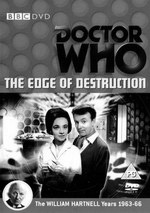
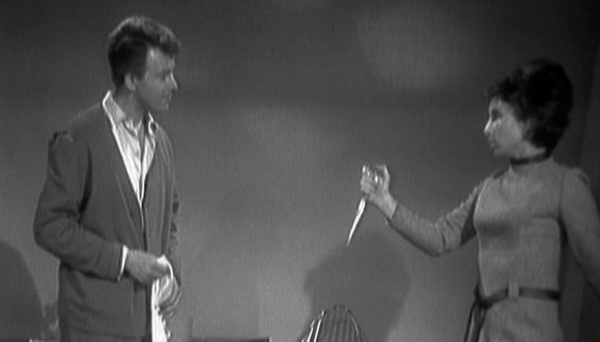
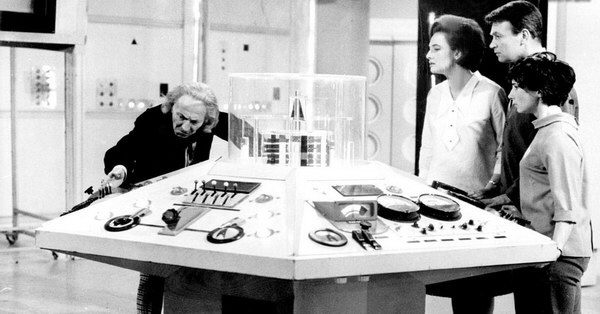
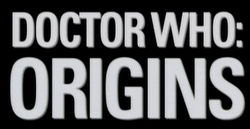
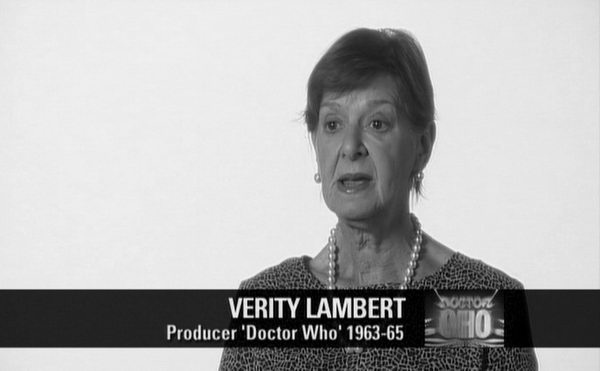
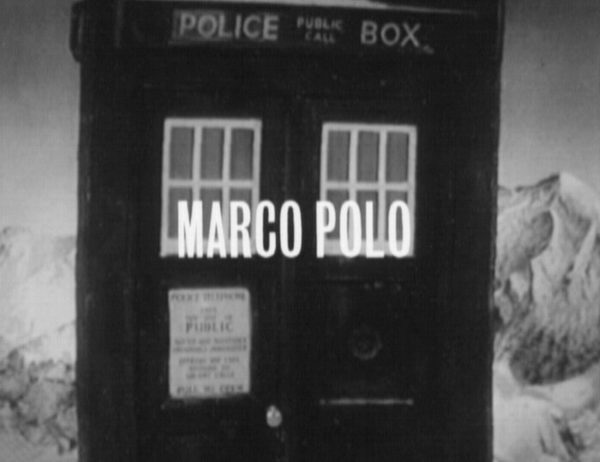
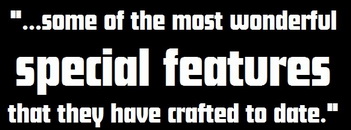
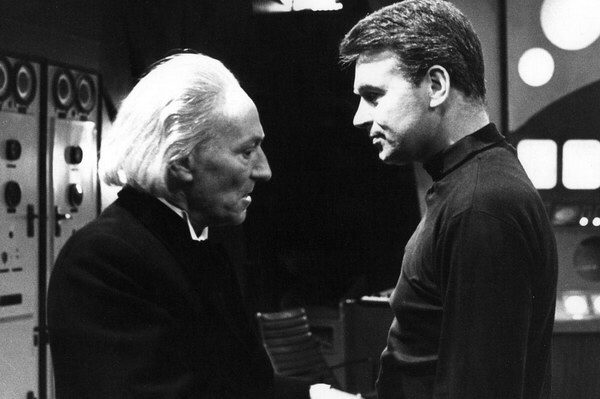
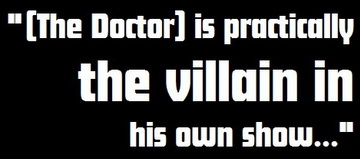 Thus
far William Hartnell has been a force to be
reckoned with. Exhibiting a keen intellect,
sharp wit and a healthy temper he
insulted and patronised his way through the
first two stories with
Thus
far William Hartnell has been a force to be
reckoned with. Exhibiting a keen intellect,
sharp wit and a healthy temper he
insulted and patronised his way through the
first two stories with 